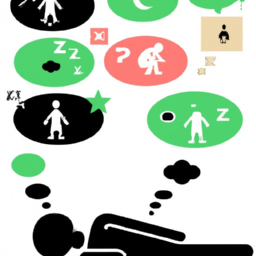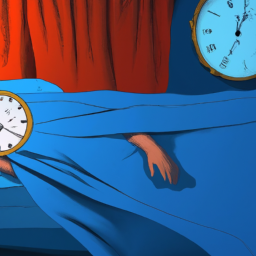Dream Meaning
What Does Flying In Your Dreams Mean

Have you ever experienced a dream in which you found yourself soaring through the skies? I surely have, and such dreams consistently leave me invigorated and wondering about their possible meanings.
Dreams are often shrouded in mystery and symbolism, yet they can provide valuable insights into our subconscious mind. As someone who is passionate about serving others, I believe that understanding the messages of our dreams can help us lead happier, more fulfilling lives.
In this article, we’ll delve into the fascinating topic of flying dreams and explore their potential meanings. We’ll examine common dream themes, historical and cultural significance, symbolism of flight, personal interpretation techniques, common scenarios in flying dreams, recurring patterns in these dreams, other related symbols that may appear in your dreams such as birds or wings, as well as lucid dreaming – a state where one becomes aware that they are dreaming while still asleep.
Whether you’re a seasoned dream interpreter or simply curious about what your nighttime adventures mean – join me on this journey to unlock the secrets of flying dreams!
Key Takeaways
- Flying dreams are common and can represent a sense of liberation or desire for freedom.
- The symbolism of flight often represents a sense of empowerment and liberation from constraints that may be holding us back in waking life.
- Personal interpretation of flying dreams can differ greatly depending on individual experiences and beliefs.
- Understanding potential meanings behind flying dreams can lead to finding resolution for underlying issues and bring greater confidence and peace of mind.
Overview of Common Dream Themes
If you’re like most people, you’ve probably had dreams that involve flying – soaring through the clouds with the wind rushing past your face and the thrill of freedom coursing through your veins.
Dreams have always been a fascinating subject for dream interpretation experts, and flying in one’s dreams is no exception. Psychological theories suggest that flying dreams represent a sense of liberation from earthly matters or an attempt to escape from a situation that feels restrictive. Some psychologists believe that flying represents overcoming obstacles, making progress, or gaining new perspectives on life.
In contrast, others argue that it signifies a need for control or a desire to break free from societal norms. Regardless of personal beliefs about dream interpretation, there is no denying the fact that flying is one of the most common themes in our subconscious world.
With this in mind, let’s explore the historical and cultural significance of flying dreams without further ado.
Historical and Cultural Significance
As I delve into the topic of historical and cultural significance of dream themes, I can’t help but be fascinated by the role that mythology and folklore play in shaping our understanding of dreams.
Many ancient cultures believed that dreams were messages from the gods or spirits, and thus attached great importance to them.
Religious interpretations have also played a significant role in shaping our perceptions of dreams throughout history. From prophetic visions to divine interventions, religion has often been closely intertwined with the interpretation of dreams.
Mythology and Folklore
You’ll often hear stories about how flying in dreams is a common theme in mythology and folklore. From the ancient Greeks and their winged gods to the Native Americans and their shamanistic journeys, there are countless tales of humans taking flight in their dreams.
In many cultures, this act is interpreted as a symbol of spiritual ascension or freedom. Some even believe that it represents a connection to mythical creatures like dragons or phoenixes.
Dream interpretation techniques have been used throughout history to try and decipher the meaning behind our nocturnal visions. Flying dreams, in particular, have been studied extensively by psychologists who believe they can reveal hidden desires or anxieties within our subconscious minds.
But beyond science, these dreams hold great significance in mythology and folklore because of the way they tap into our innate desire for freedom and transcendence.
As we explore further into religious interpretations of flying dreams, it becomes clear that this topic has been viewed through many different lenses throughout history.
Religious Interpretations
Religious interpretations of flying dreams offer a fascinating glimpse into the spiritual beliefs of different cultures and time periods. In many religions, dreams are seen as a way for the divine to communicate with mortals, and therefore interpreting them can reveal important insights about one’s spiritual path.
In Hinduism, for example, flying in a dream is often interpreted as a sign of liberation from worldly attachments. This interpretation stems from the belief that the soul is bound by earthly desires and only through meditation and self-realization can it achieve infinite freedom.
Psychological analysis also plays a role in interpreting flying dreams within religious contexts. For instance, some scholars argue that flying in a dream represents an individual’s need for transcendence or their desire to escape reality.
In Christianity, flying dreams are often seen as symbolic of ascension towards heaven or God’s grace. These interpretations demonstrate how religion can provide people with meaning and purpose in their lives beyond just the physical realm.
The symbolism of flight goes beyond just religious interpretations, however. It has been used throughout history in literature and art to represent everything from freedom to power and even death. Understanding these different meanings adds yet another layer to our interpretation of flying dreams.
Symbolism of Flight
Flying in dreams is a powerful symbol of freedom and escape, allowing us to soar above our daily struggles and limitations. This metaphorical meaning has significant psychological implications as it can represent the desire for personal growth, the need for emotional release, or the yearning for greater spiritual awareness. The symbolism of flight often represents a sense of empowerment and liberation from constraints that may be holding us back in waking life.
To better understand the symbolism of flight in dreams, let’s take a look at this table:
| Symbol | Meaning | Interpretation |
|---|---|---|
| Wings | Freedom | Desire for independence and autonomy |
| Birds | Spirituality | Connection to higher power or divine guidance |
| Airplanes | Control | Need to take charge and steer one’s own path |
As we can see from this table, different symbols associated with flying may have varying interpretations depending on the dreamer’s personal experiences and associations. It is important to analyze each individual element within the dream to gain insight into its personalized significance. In doing so, we can uncover deeper layers of meaning within ourselves and our subconscious desires.
Moving forward into the subsequent section about ‘personal interpretation’, it is crucial to consider how these symbolic meanings may differ based on one’s unique background and experiences.
Personal Interpretation
As we explored in the previous section, flight in dreams is often symbolic of freedom, escape, and transcendence. However, the personal interpretation of this symbol can differ greatly depending on individual experiences and beliefs.
When I dream about flying, it often represents a sense of empowerment and control over my life. It gives me the ability to rise above my problems and obstacles, even if only temporarily. There are many symbolic implications behind dreams of flight that can have psychological effects on an individual’s waking life.
For example, feeling weightless while flying can represent a release from burdens or stressors. The sensation of soaring through the air may also signify a desire for spiritual growth or enlightenment. These interpretations can serve as powerful insights into one’s subconscious thoughts and emotions.
Feeling empowered, having a sense of control, experiencing a release from burdens, desiring spiritual growth, and gaining insights into the subconscious are all possible interpretations of dreams of flight. It’s important to remember that dream symbolism is highly personal and subjective, and what flying means to one person may not necessarily apply to another.
In the next section, we will explore different techniques for interpreting dreams in order to gain further insight into our own unique symbols and meanings without relying solely on universal interpretations.
Interpretation Techniques
When it comes to interpreting our dreams, there are several techniques that we can use. One of these is journaling and reflection. We record our dreams immediately after waking up and reflect upon them throughout the day.
Another technique involves using dream analysis tools such as symbols dictionaries or online resources. These tools help us decipher the meanings behind our dreams.
Lastly, for those who struggle with interpretation on their own, seeking professional guidance from a therapist or dream analyst may be helpful in understanding the deeper significance of our dreams.
Journaling and Reflection
By taking the time to journal and reflect on your dreams, you can uncover hidden emotions and insights that may be influencing your subconscious mind.
Reflective exercises such as journaling can help you explore the meaning of your dreams by providing a space for self-reflection where you can process your thoughts and feelings. Journaling is an effective way to recall details from your dream, including colors, sounds, people or objects present in the dream. This allows for a deeper analysis of what each element might mean and how it connects to other aspects of your life.
Moreover, there are benefits of journaling beyond just understanding the symbols in our dreams. It provides an opportunity for personal growth and insight into our own minds. By observing patterns or recurring themes in our dreams over time, we may gain insight into our deepest desires or fears that we may not have consciously acknowledged before.
Additionally, writing about emotions associated with certain events in our lives can help us process them more effectively. With these reflective exercises under our belt, let’s now move on to exploring other dream analysis tools that we can use to better understand what flying in dreams means!
Dream Analysis Tools
Let’s dive into the various dream analysis tools available to gain a deeper understanding of our dreams and unlock their hidden messages, so we can better navigate our waking lives. One of the most common and effective techniques for analyzing dreams is dream journaling. By writing down the details of your dreams as soon as you wake up, you can capture important elements before they fade from memory. This allows you to revisit your dreams later on and reflect on any patterns or symbolism that may emerge.
Another useful tool for interpreting dreams is visualization techniques. Close your eyes and visualize yourself back in the dream state, then take note of any new information that comes to mind. You can also try role-playing different aspects of the dream to gain a better understanding of its meaning. Additionally, there are many online resources available such as dream dictionaries and forums where people share their interpretations of common symbols in dreams. By utilizing these various interpretation techniques, we can start to unravel the mysteries behind our subconscious minds and gain valuable insights into ourselves. It’s important to remember though, that seeking professional guidance may be necessary if you’re having recurring nightmares or experiencing intense emotional reactions during your dreams.
Seeking Professional Guidance
If you’re struggling to make sense of your dreams or experiencing intense emotions during them, seeking professional guidance can provide clarity and support to help you navigate the messages your subconscious is sending.
There are a variety of benefits to therapy that can aid in dream interpretation, such as having a safe space to discuss your thoughts and feelings without judgement. Additionally, therapists may offer tips for increasing dream recall, which can be helpful for those who struggle to remember their dreams.
Working with a therapist can also provide insight into potential underlying issues that may be manifesting in your dreams. They can assist in identifying patterns or themes that arise frequently in your dreams and help you discover any unconscious conflicts or desires. By exploring the meaning behind these recurring symbols or scenarios, you may gain a better understanding of yourself and how certain aspects of your life may be impacting your mental health.
With this foundation established, we can now delve into common flying dream scenarios.
Common Flying Dream Scenarios
When you’re soaring through the sky in your dreams, it’s common to experience different scenarios like flying over a city or even battling against enemies mid-air. Each scenario can provide valuable insight into what your subconscious mind is trying to convey.
Interpretation techniques suggest that flying represents a feeling of freedom, empowerment, and control over one’s life. However, if you find yourself flying upside down in your dream, this could indicate a sense of confusion or lack of direction in waking life.
Additionally, recurring flying dreams may suggest that there are unresolved issues or fears that need to be addressed. It’s important to pay attention to the details within these dreams as they may hold clues about what needs to be addressed.
In the next section, we’ll explore how these recurring dreams can relate to our daily lives and offer suggestions for understanding their message.
Recurring Flying Dreams
I’ve been experiencing recurring flying dreams lately, and I find them quite intriguing. After some research, I discovered that they’re not uncommon, and there could be several possible causes for their recurrence.
Some experts suggest that these dreams may stem from unresolved emotions or suppressed desires. However, finding resolution can be challenging as it may require digging deeper into one’s subconscious mind to uncover the root cause of these recurring dreams.
Possible Causes
You’re probably wondering what’s behind the phenomenon of flying in your dreams, and there are several possible causes, from psychological theories to cultural influences.
One common explanation is that it represents a sense of freedom or control. Flying can be seen as an escape from daily stressors or a way to rise above obstacles. It may also reflect a desire for adventure, exploration, or new experiences.
Emotional triggers can play a role as well. For example, anxiety might manifest in dreams as the inability to fly smoothly or safely. Alternatively, flying could symbolize confidence and accomplishment if you’re able to soar effortlessly through the air. These interpretations may vary based on personal experiences and cultural beliefs.
Ultimately, understanding the potential meanings behind flying dreams can help us gain insight into our subconscious thoughts and emotions, leading us towards finding resolution for any underlying issues we may be facing in waking life.
Finding Resolution
Discovering the underlying emotions and thoughts behind flying dreams can be a key step in finding closure and moving on from any challenges faced in daily life. Dreams about flying are often associated with feelings of freedom, power, and control. If you find yourself soaring through the sky with ease in your dream, it could mean that you’re feeling confident and self-assured in your waking life.
However, if your flying dream is accompanied by fear or anxiety, it may indicate that there are underlying issues that need to be addressed. Perhaps you’re feeling overwhelmed or out of control in a particular situation. By exploring these emotions further, you may be able to find solutions to overcome any obstacles standing in your way.
Finding resolution within yourself can lead to greater confidence and peace of mind, allowing you to move forward with clarity and purpose.
As we explore other dream symbols later on, it’s important to note that each person’s experience with dreaming is unique and subjective. However, by understanding the symbolism behind certain dreams like flying, we can gain valuable insights into our subconscious minds and potentially uncover new ways of approaching challenges we face in our everyday lives.
Other Dream Symbols
Remember, dream symbols can reveal hidden meanings and mysteries in your mind. While flying dreams may suggest a sense of freedom or the ability to rise above a situation, there are other symbols that can appear in your dreams that are worth exploring.
One way to interpret your dreams is through the use of a dream dictionary, which assigns specific meanings to common symbols. Another method is through personal association, where you reflect on what certain objects or actions mean to you personally. Dream journaling techniques can also be helpful in identifying patterns and recurring themes in your dreams. By understanding the symbolism within your dreams, you can gain insight into your subconscious thoughts and emotions.
As we continue our exploration of dreaming, it’s important to note that lucid dreaming is another fascinating aspect of this mysterious realm.
Lucid Dreaming
Get ready to experience the incredible thrill of controlling your own dreams with lucid dreaming. This is a technique that allows you to become aware that you’re dreaming while still in the dream state, giving you the ability to manipulate and control your dreams.
With lucid dreaming, flying in your dreams can be an exhilarating and empowering experience. To start practicing lucid dreaming techniques, it’s important to develop awareness of your waking life so that it’ll carry over into your dream state.
You can do this by performing reality checks throughout the day and asking yourself whether you’re awake or dreaming. Once you start doing this regularly, it’ll become a habit and eventually carry over into your dreams as well.
When you find yourself flying in a dream, take advantage of this moment by using visualization techniques to help control the direction and speed of flight. Remember that in lucid dreams, anything’s possible!
Frequently Asked Questions
Can flying dreams be interpreted differently based on the type of flying (e.g. flying on a broomstick vs. flying with wings)?
Different types of flying in dreams can have varying interpretations in terms of flying symbolism and dream interpretation. For instance, flying on a broomstick may symbolize control or independence, while flying with wings may represent freedom or spiritual growth.
Are there any scientific explanations for why people have flying dreams?
Flying dreams have fascinated me for years, and the science behind them is equally intriguing. Dream analysis and psychology suggest that flying dreams represent a feeling of liberation or freedom in waking life.
Do flying dreams always have positive connotations, or can they also indicate fear or anxiety?
Flying dream symbolism can be interpreted in different ways. While it may represent liberation or euphoria, common emotions in flying dreams also include fear and anxiety. Understanding the context of the dreamer’s life is crucial to interpreting its meaning.
Can the frequency of flying dreams be linked to external factors, such as stress or medication?
I’ve found that stress and medication can impact the frequency of my flying dreams. Dream journaling has helped me identify patterns and triggers, while practicing lucid dreaming techniques has given me more control over these experiences.
Are there any cultural or regional differences in the interpretation of flying dreams?
Exploring cultural variations in dream symbolism is crucial to understanding the interpretation of flying dreams. Different cultures ascribe different meanings to flying, from spiritual enlightenment to a fear of death.
Conclusion
In conclusion, flying in dreams can hold significant meaning and symbolism. Throughout history and across cultures, flight has been viewed as a symbol of transcendence, freedom, and power. Personal interpretation is key when trying to understand the message behind your flying dream.
Techniques such as journaling and exploring recurring patterns can aid in uncovering deeper meanings. Don’t dismiss other dream symbols that may appear while flying; they could hold important clues to your subconscious thoughts and emotions.
Lucid dreaming can also provide a unique opportunity to explore your flying dream in a conscious state. So next time you find yourself soaring through the sky in your dreams, take note of the details and reflect on what it could be trying to tell you.
Happy dreaming!
Josephine brings a wealth of knowledge in psychology to the Hello Lovely team. Her understanding of the human mind and its connection to dreams provides a fresh perspective to our content.
With a research-oriented approach, Josephine’s articles delve into the intricacies of dream psychology, exploring topics such as lucid dreaming, dream analysis, and the impact of dreams on our well-being. Her ability to bridge the gap between scientific research and accessible writing ensures that readers gain valuable insights into the psychological aspects of dreaming.
Dream Meaning
Who Is The Voice In Field Of Dreams

As a child, I recall watching Field of Dreams with my family and being mesmerized by the mystical voice that communicated with Ray Kinsella. The movie has lingered in my memory over the years, and one major question that has always intrigued me is the identity of the voice that delivered the famous line, ‘If you build it, he will come.’
For me, the voice in Field of Dreams is symbolic of the mystical and magical nature of the film. It’s a voice that speaks to the heart of the protagonist, urging him to take a leap of faith and build a baseball field in the middle of his cornfield.
It’s a voice that speaks to the audience as well, drawing us into the story and making us believe that anything is possible if we just have faith.
In this article, I’ll explore the various theories and speculations about who the voice in Field of Dreams really was, and what its significance is to the film as a whole.
Key Takeaways
- The voice in Field of Dreams is a crucial element of the film, representing the mystical and magical nature of the story and urging the protagonist to follow his heart.
- The identity of the voice is open to interpretation and has led to various theories and speculations, including that it is a manifestation of the protagonist’s subconscious or the voice of his deceased father.
- Interviews with the cast and crew provide valuable insights into the production process and creative choices, including Kevin Costner’s suggestion that the voice be that of his father and James Earl Jones’ iconic voiceover work.
- The voice adds depth and emotion to the story, deepening the connection between the audience and the characters, and without it, the film would not be the same.
Overview of the Film Field of Dreams
If you’re a fan of emotional and heartwarming movies, you’ve got to check out Field of Dreams. It’s a classic film that will leave you feeling inspired and uplifted.
The movie tells the story of Ray Kinsella, an Iowa farmer who hears a mysterious voice telling him to build a baseball field in his cornfield. Despite the doubts of his family and friends, Ray follows the voice’s instructions and builds the field.
Soon, the ghosts of famous baseball players from the past appear and play on the field, leading Ray on a journey of self-discovery and forgiveness. As the story unfolds, we see Ray’s relationships with his family and community evolve as he follows his heart and pursues his dreams.
The film is a beautiful exploration of the power of faith, love, and the human spirit. And as the mystery of the voice and the baseball field unfolds, we are drawn deeper into Ray’s world and his journey towards redemption.
The Mysterious Voice
You can almost feel a whisper tickling the hairs on the back of your neck, as if a gentle breeze is carrying a secret message straight to your soul. This is the mysterious voice that leads Kevin Costner’s character, Ray Kinsella, on a journey of self-discovery in the film ‘Field of Dreams.’
The voice seems to come out of nowhere, urging Ray to build a baseball field in the middle of his Iowa cornfield. Despite the skepticism of those around him, Ray follows the voice, and it leads him to a magical place where he meets his heroes and learns more about himself than he ever thought possible.
So who is the voice in ‘Field of Dreams?’ The answer is not a simple one. Some interpret it as a manifestation of Ray’s subconscious, a call to his innermost desires. Others believe it to be the voice of Ray’s father, who had a lifelong love of baseball and a strained relationship with his son. Either way, the voice serves as a catalyst for Ray’s journey, and its message inspires him to take a leap of faith and follow his heart.
As we delve deeper into the story, we will learn more about Ray’s father and the impact he had on his son’s life.
Ray Kinsella’s Father
Ray Kinsella’s relationship with his father is a central theme in ‘Field of Dreams,’ revealing the complexities of familial bonds and the ways in which they shape our lives. Throughout the film, Ray struggles with the memory of his father, who died when he was still a teenager. He feels guilty for not having a better relationship with him and for not fully understanding his father’s love for baseball.
As the story unfolds, we see that the voice that calls out to Ray from the cornfield is actually that of his father. This revelation is a powerful moment that speaks to the enduring connections we have with our loved ones, even after they are gone. In the table below, I have highlighted some of the key moments in the film that explore the relationship between Ray and his father, as well as the impact it has on his journey throughout the story.
| Moment | Description |
|---|---|
| Shoeless Joe Jackson appears | Ray hears a voice telling him to build a baseball field in his cornfield |
| Ray’s father appears | Ray realizes that the voice is that of his father |
| Ray’s confession | Ray confesses to Terence Mann that he regrets not having a better relationship with his father |
| Father and son play catch | Ray has a catch with his father, finally understanding what his father loved about baseball |
| The final scene | Ray introduces his daughter to the ghost players, finally understanding the importance of family and connection |
As Ray continues on his journey, he soon realizes that building the baseball field was not just about baseball. It was about reconnecting with his past and understanding the importance of family. This realization sets the stage for the next chapter in his adventure, as he continues to explore the mysteries of the cornfield and the ghosts that inhabit it.
Shoeless Joe Jackson
After Shoeless Joe Jackson appears out of the cornfield, his presence provides a link to the past and a glimpse into a world of baseball that exists beyond the physical realm. As a character in the movie Field of Dreams, Shoeless Joe is portrayed by Ray Liotta. He’s a legendary baseball player who was banned from the sport for his alleged involvement in the 1919 Black Sox scandal.
However, in the movie, Shoeless Joe is given a chance to redeem himself by playing baseball once again on Ray Kinsella’s field. Shoeless Joe’s character represents the passion and love for the game of baseball that transcends time and space. His presence in the movie also symbolizes the importance of forgiveness and redemption.
Without Shoeless Joe, the movie would not have been the same, and it’s no wonder that his character has become so iconic in the world of baseball and cinema. With that said, as the story unfolds, James Earl Jones’ character, Terence Mann, becomes a crucial player in Ray Kinsella’s journey to fulfill his destiny.
James Earl Jones
Now, let me tell you about James Earl Jones and his role in the iconic movie, Field of Dreams. Jones played the character of Terence Mann, a reclusive writer who becomes a central figure in the story. His deep, resonant voice and commanding presence added a layer of gravitas to the film, and his performance was praised by both critics and audiences alike.
Here are 5 interesting facts about James Earl Jones and his involvement in Field of Dreams:
-
Jones wasn’t the first choice for the role of Terence Mann. Other actors considered for the part included Robert Duvall, Gene Hackman, and John Malkovich.
-
Jones initially turned down the role, but was eventually convinced to take it by director Phil Alden Robinson.
-
Jones and Kevin Costner, who played the lead role of Ray Kinsella, had previously worked together on the film The Untouchables.
-
Jones’ character was loosely based on real-life author J.D. Salinger, who was known for his reclusive lifestyle and had a similar impact on the main character’s life in the novel that the movie was adapted from.
-
Jones’ voiceover work for Field of Dreams earned him a nomination for a Screen Actors Guild Award.
Other actors and celebrities who could have voiced the character of Terence Mann include some of the biggest names in Hollywood. But in the end, it was James Earl Jones who brought the character to life in a way that no one else could.
Other Actors and Celebrities Who Could Have Voiced the Character
Interestingly enough, some of the biggest names in Hollywood were considered for the role of Terence Mann in Field of Dreams. While James Earl Jones ultimately landed the part and delivered an iconic performance, it’s fun to imagine what the movie would have been like with someone else in the role. Here are some of the actors and celebrities who were rumored to be in consideration:
| Actor/Celebrity | Reason for Rumored Consideration |
|---|---|
| Robert Redford | Director Phil Alden Robinson admired Redford’s work and thought he would bring a certain gravitas to the role. |
| Burt Lancaster | Lancaster was a Hollywood legend and could have brought a different energy to the character. |
| Paul Newman | Newman had a certain charm and charisma that could have made the character more appealing to audiences. |
| Gene Hackman | Hackman had worked with Robinson before and was considered a versatile actor who could bring depth to the character. |
| Sidney Poitier | Poitier was known for his powerful performances and could have added a certain prestige to the role. |
It’s interesting to think about how each of these actors could have influenced the character of Terence Mann and the overall tone of the film. However, it’s hard to imagine anyone other than James Earl Jones delivering the iconic speech about baseball being "the one constant through all the years."His deep, resonant voice added a certain gravitas to the film and helped make it a classic.
The importance of the voice in the film cannot be overstated. It’s not just about delivering lines, but also about embodying the character and adding a certain depth to the story. James Earl Jones was the perfect choice for Terence Mann, and his performance helped cement Field of Dreams as one of the most beloved sports movies of all time.
The Importance of the Voice in the Film
Now that we’ve talked about other actors and celebrities who could have voiced the character in Field of Dreams, let’s shift our focus to the importance of the voice in the film. As a viewer, we often take for granted the power of a voice in storytelling.
However, in Field of Dreams, the voice is a character in and of itself. Firstly, the voice sets the tone for the entire film. It’s mysterious, yet comforting. It’s gentle, yet firm. It’s what draws the main character, Ray, to embark on his journey. The voice is what keeps him going when things get tough. Without the voice, Field of Dreams would not be the same movie that we know and love today.
To further emphasize the importance of the voice, here are four reasons why it’s such a crucial element in the film:
- It creates a sense of wonder and magic.
- It serves as a guiding force for the main character.
- It adds an element of mystery and intrigue.
- It deepens the emotional connection between the audience and the story.
With the voice being such a crucial part of the film, it’s no wonder that fans have come up with their own theories and speculations about who could have voiced the character. Let’s dive into some of these theories and see if we can uncover the truth.
Fan Theories and Speculation
You might be surprised to hear that fans have been tossing around some wild ideas about who could have lent their pipes to the mysterious character in Field of Dreams, ranging from A-list actors to obscure voiceover artists. But as the saying goes, the proof is in the pudding, and until we get a definitive answer, we’ll just have to keep guessing. To add fuel to the fire, a number of fan theories and speculations have emerged over the years, with some even suggesting that the voice could belong to a deceased loved one of Ray’s, while others believe it to be the ghost of Shoeless Joe himself.
To better understand some of the fan theories and speculation, I’ve compiled a table that highlights some of the most popular guesses along with their likelihood of being the actual voice. It’s important to note that the table is solely based on speculation and conjecture, and until we get an official answer, we can’t be certain who the voice actually belongs to. Nonetheless, it’s interesting to see the range of opinions and ideas that have been put forward by fans over the years.
| Voice Actor | Likelihood of Being the Actual Voice | Reasoning |
|---|---|---|
| Kevin Costner | Low | Already stars as Ray Kinsella |
| James Earl Jones | Low | Already stars as Terence Mann |
| Ray Liotta | Medium | Has a similar voice and starred as Shoeless Joe |
| Burt Lancaster | Low | Deceased actor, unlikely to have voiced the character |
| Ed Harris | Medium | Has a similar voice and starred in other Kevin Costner films |
As intriguing as the fan theories are, it’s important to remember that they are only speculations. The only way to get a concrete answer is to turn to interviews with cast and crew, which is the next topic we’ll be exploring.
Interviews with Cast and Crew
Unveiling the mystery behind the character in Field of Dreams, interviews with the cast and crew provide valuable insights into the production process and the creative choices made.
In a recent interview, Kevin Costner revealed that the voice in the movie was actually his idea. He had suggested to director Phil Alden Robinson that the voice be that of his father, who had passed away a few years prior. Robinson loved the idea and they went ahead with it.
Other members of the cast and crew have also talked about the impact the voice had on the film. Amy Madigan, who played Costner’s wife in the movie, said that the voice added a layer of emotion and spirituality to the story. Even James Earl Jones, who played the reclusive author Terence Mann, has mentioned how the voice gave the movie a sense of magic and wonder.
It’s clear that the voice was an integral part of the film, and it’s fascinating to hear how it came to be.
Here are three interesting facts about the making of Field of Dreams:
-
The film was shot in just 62 days, which is a relatively short amount of time for a major Hollywood production.
-
The famous line ‘If you build it, he will come’ was originally written as ‘If you build it, they will come.’ It was changed during filming to make it more personal and impactful.
-
The iconic scene where Shoeless Joe Jackson emerges from the cornfield was filmed in just one take. Actor Ray Liotta said he was nervous about getting it right, but everything went smoothly and it ended up being one of the most memorable moments in the movie.
Frequently Asked Questions
How does the voice in Field of Dreams impact the plot of the movie?
The voice in Field of Dreams plays a crucial role in driving the plot forward. It urges the protagonist to pursue his dreams and reconnect with his father, ultimately leading to a heartwarming and emotional climax.
What was the casting process like for the character of Ray Kinsella?
The casting process for Ray Kinsella in Field of Dreams was a dream come true. I couldn’t believe my luck when I got the part. It was like winning the lottery and I was over the moon.
How did the director choose the specific location for filming the movie?
I scouted for the perfect location and found a farm in Iowa that fit the bill. We filmed on location, capturing the essence of the Midwest and the nostalgia of baseball. It was a magical experience.
What was the inspiration behind the screenplay for Field of Dreams?
As the screenwriter for Field of Dreams, my inspiration came from a desire to explore the relationship between fathers and sons. It was a personal story that evolved into a magical tale of baseball and redemption.
Did any real-life events or people influence the making of the movie?
Real-life events and people inspired the making of Field of Dreams. My own experiences with my father, a love for baseball, and the writings of J.D. Salinger and W.P. Kinsella all played a role in the creation of the film.
Conclusion
As I sit here pondering the mysterious voice in Field of Dreams, my mind wanders back to the magical moments of the film.
The voice, which seemed to come from the cornfields, was a pivotal character that drew us into the story and kept us transfixed until the end.
The voice, like a gentle breeze on a summer’s day, whispered words of wisdom and inspiration to Ray Kinsella.
It was a voice that gave hope and rekindled long-lost dreams.
Whether it was the voice of Ray’s father, Shoeless Joe Jackson, or James Earl Jones, it remains a mystery that adds to the allure of the film.
Field of Dreams was a masterpiece that touched our hearts, and the voice was the glue that held it all together.
Eislyn is a gifted writer whose words weave enchanting narratives within the realm of dreams. With a profound love for storytelling and a deep curiosity about dreams, Eislyn’s articles transport readers into vivid dreamscapes.
Her writing style is both eloquent and thought-provoking, captivating readers’ imaginations and inspiring them to dive deeper into the mysteries of their own dreams. Eislyn’s exploration of dream symbolism and interpretation adds depth and nuance to our content, making it an absolute pleasure for dream enthusiasts to engage with.
Dream Meaning
Which Statement Best Describes How Gilgamesh’s Dreams Affect The Plot Of Gilgamesh

As I explored the ancient epic of Gilgamesh, I couldn’t ignore the frequent occurrence of dreams. Gilgamesh, the renowned king of Uruk, encounters various dreams during his adventures. However, what is the importance of these dreams? How do they impact the storyline of Gilgamesh’s tale?
In this article, I will explore the role of dreams in Gilgamesh’s tale and analyze their impact on the overarching plot.
Throughout the course of the epic, dreams serve as a powerful tool for both foreshadowing and character development. Each dream that Gilgamesh experiences provides insight into his psyche and motivations, as well as hints towards future events. But dreams are also a source of ambiguity and uncertainty.
Interpretation is key in understanding the true meaning of each dream, and it is often up to the reader to determine what message the dream is conveying. In the following paragraphs, I will delve deeper into the importance of dreams in Gilgamesh’s story and how they contribute to the overall plot.
Key Takeaways
- Gilgamesh’s dreams serve as a tool for foreshadowing and character development, providing insight into his psyche and motivations.
- The interpretation of Gilgamesh’s dreams has a profound impact on his actions and decisions, leading to personal growth and transformation.
- Dreams reveal the gods’ plans and foreshadow future events, influencing Gilgamesh’s behavior and shaping the storyline.
- Examining Gilgamesh’s dreams in the context of ancient Mesopotamian society can provide insight into their fears and beliefs, and the power of dreams as a device that still holds sway today.
The Importance of Dreams in Gilgamesh’s Story
The dreams Gilgamesh has play a crucial role in shaping the storyline. They are the driving force behind Gilgamesh’s journey to find eternal life.
The first dream he has is about a meteorite falling to Earth, which he interprets as a sign of his own mortality. This fuels his desire to find a way to live forever.
The second dream he has is about an axe in a field, which he interprets as a message from the gods telling him to seek out his destiny. These dreams set Gilgamesh on his path, and without them, he may never have embarked on his epic quest.
The role of interpretation is also key in understanding how Gilgamesh’s dreams affect the plot. Without his own interpretation of the dreams, Gilgamesh may have missed the message entirely. This shows the importance of being able to interpret one’s own dreams and understand their significance.
It also highlights how our own interpretations can shape our actions and ultimately affect the course of our lives. In Gilgamesh’s case, his dreams lead him on a dangerous and ultimately unsuccessful journey, but they also provide him with valuable insights into his own mortality and the importance of living a meaningful life.
The Role of Interpretation
I find it fascinating how Gilgamesh’s dreams play a crucial role in shaping his actions. But what’s even more intriguing is how he interprets these dreams.
In the story, we see Gilgamesh seeking guidance from various experts and diviners to make sense of his dreams. Their interpretations have a significant impact on his decisions. It’s a testament to the power of interpretation and how it can shape our lives, even in ancient times.
How Gilgamesh Interprets His Dreams
You’ll notice that Gilgamesh interprets his dreams with the help of Enkidu, his trusted friend. Interestingly, dreams play a significant role in the plot of Gilgamesh as they reveal the gods’ plans and foreshadow the events to come.
Gilgamesh’s dreams are symbolic and require interpretation, as they’re not always straightforward. Enkidu’s ability to interpret dreams is essential in helping Gilgamesh understand the deeper meanings behind them.
Some of the ways in which Gilgamesh interprets his dreams with the help of Enkidu include:
- Interpreting the dream of the meteor that fell from the sky, which symbolized the arrival of Enkidu in the city of Uruk
- Understanding the dream of the bull with the help of Shamash, which foreshadowed the epic battle between Gilgamesh and Humbaba
- Deciphering the dream of the thunderbird, which predicted the arrival of the goddess Ishtar
- Recognizing the dream of the axe, which foreshadowed the death of Enkidu
- Analyzing the dream of the flood, which foretold the story of the flood that would come to pass.
The interpretation of Gilgamesh’s dreams has a profound impact on his actions and decisions. Without Enkidu’s help, Gilgamesh wouldn’t have been able to make sense of the messages the gods were sending him through his dreams.
The foreshadowing and prophecy provided by these dreams influenced Gilgamesh’s behavior and drove him to take certain actions, ultimately leading to his personal growth and transformation.
The Impact on His Actions
By interpreting his dreams with Enkidu, Gilgamesh was able to gain insight into the gods’ plans and make decisions that drove the plot forward.
When Gilgamesh had a dream about a meteor falling from the sky, he interpreted it as a sign that he and Enkidu should embark on a journey to defeat Humbaba. Without this dream, Gilgamesh may not have felt compelled to take on this dangerous mission.
Additionally, when Gilgamesh had a dream about a bull being slaughtered, he saw it as a sign that Enkidu would be killed. This dream drove Gilgamesh to seek revenge against the gods by attempting to attain immortality.
Overall, Gilgamesh’s dreams played a significant role in shaping the plot of the story. Had he not interpreted them, the events that drove the plot forward may not have occurred. Gilgamesh’s dreams not only influenced his actions, but they also provided insight into the will of the gods and the fate of himself and his friend.
The Influence on the Plot
As the reader, you can see how Gilgamesh’s dreams play a crucial role in shaping the plot of the epic by foreshadowing events and guiding his actions in the story. In the beginning of the story, Gilgamesh has a dream about a wild bull that he cannot control. This dream foreshadows his upcoming battle with Humbaba, the guardian of the Cedar Forest. In another dream, Gilgamesh sees a meteor that falls from the sky, which represents the arrival of Enkidu, his eventual best friend and companion.
Aside from foreshadowing events, Gilgamesh’s dreams also guide his actions in the story. When Gilgamesh has a dream about a falling axe that represents the death of Enkidu, he becomes consumed with grief and sets off on a journey to find eternal life. This dream ultimately leads to Gilgamesh’s realization that he cannot escape death and must come to accept it as a natural part of life. Therefore, Gilgamesh’s dreams serve as a powerful literary tool that not only advance the plot of the story, but also provide insight into the character’s motivations and inner thoughts.
As we dive deeper into the themes and motivations of the story, we can see how Gilgamesh’s dreams tie into his obsession with immortality and the fear of death.
Themes and Motivations
Gilgamesh’s quest for immortality and fear of death are central themes in the epic, driving his actions and shaping his character throughout the story. These themes are also evident in his dreams, which play a significant role in the plot.
In his first dream, he sees an axe that represents death and is haunted by the fear of his own mortality. This fear leads him to embark on a quest for eternal life, which sets the stage for the rest of the story.
In his second dream, Gilgamesh sees a meteor that falls from the sky, representing his own mortality and the inevitability of death. This dream serves as a wake-up call, reminding him that he cannot escape death and that he must accept his mortality.
The dreams, therefore, act as a catalyst for his character development and drive the plot forward. Without them, Gilgamesh may not have embarked on his quest for immortality, and the story would have taken a different course.
The dreams serve as a reminder of the fragility of life and the importance of accepting our mortality, a message that still resonates today.
The Significance Today
As I explored the themes and motivations behind Gilgamesh’s dreams, I couldn’t help but wonder about their significance today. After all, this epic tale is thousands of years old, so what relevance could it hold for modern readers?
But as I delved deeper, I realized that the dreams are a powerful device that still hold sway today. Here are three reasons why:
-
Dreams as a window into the subconscious: Just like Gilgamesh’s dreams reveal his deepest fears and desires, our own dreams can provide insights into our own psyche. They can offer a glimpse into our hidden fears, hopes, and motivations, and give us a chance to process and understand them.
-
Dreams as a source of inspiration: Throughout history, dreams have been a source of inspiration for artists, writers, and thinkers. From Salvador Dali to Edgar Allan Poe, many creatives have drawn on their dreams for ideas and imagery. Today, dream journals and dream workshops are popular tools for tapping into our subconscious and unlocking our creativity.
-
Dreams as a reflection of society: The dreams in Gilgamesh are a reflection of the fears and beliefs of ancient Mesopotamian society. In the same way, our own dreams can be influenced by the cultural and societal forces around us. By examining our dreams, we can gain a deeper understanding of the world we live in and the forces that shape us.
Frequently Asked Questions
What other literary works include the use of dreams as a plot device?
Dreams have played a significant role in many literary works. From Shakespeare to Stephen King, authors have used dreams as a plot device to add intrigue and complexity to their stories. They have the power to reveal hidden truths and create a sense of mystery that keeps readers engaged.
How does Gilgamesh’s interpretation of his dreams change throughout the story?
My interpretation of my dreams in Gilgamesh changed as I gained wisdom and maturity. At first, I saw them as mere illusions, but later understood their prophetic significance, leading me on my heroic journey.
What impact do Enkidu’s dreams have on the plot of the story?
Enkidu’s vivid dreams foreshadow his death and cause him great fear, leading him to seek out the gods for answers. Ironically, it is through his dreams that he ultimately finds peace and acceptance of his mortality, impacting the plot of the story.
How do the dreams in Gilgamesh reflect the cultural beliefs and values of ancient Mesopotamia?
The dreams in Gilgamesh reflect the cultural beliefs and values of Ancient Mesopotamia, as they serve as a means of communication with the gods and are believed to hold important messages about the future.
Are there any modern interpretations of the significance of Gilgamesh’s dreams that differ from traditional interpretations?
Like a treasure hunter, I searched for modern interpretations of Gilgamesh’s dreams. While traditional views emphasize their prophetic nature, some scholars see them as a reflection of the hero’s psychological development.
Conclusion
In conclusion, Gilgamesh’s dreams were a crucial element in the development of the plot. They provided insight into the character’s motivations, fears, and desires, as well as foreshadowing future events. The interpretation of these dreams played an important role in the story, as it allowed Gilgamesh to understand and accept his mortality, leading to his eventual transformation into a wise and compassionate king.
As I reflect on the impact of dreams in Gilgamesh’s story, I’m reminded of the words of the great philosopher Aristotle, who once said, "Dreams are the touchstones of our characters."Indeed, our dreams can reveal the deepest parts of ourselves, and Gilgamesh’s dreams were no exception.
Through them, we were able to witness his journey of self-discovery and growth, making his story both timeless and relatable.
Eislyn is a gifted writer whose words weave enchanting narratives within the realm of dreams. With a profound love for storytelling and a deep curiosity about dreams, Eislyn’s articles transport readers into vivid dreamscapes.
Her writing style is both eloquent and thought-provoking, captivating readers’ imaginations and inspiring them to dive deeper into the mysteries of their own dreams. Eislyn’s exploration of dream symbolism and interpretation adds depth and nuance to our content, making it an absolute pleasure for dream enthusiasts to engage with.
Dream Meaning
Why Do You Have Dreams About People

I’ve always been captivated by the realm of dreams. There’s a certain charm and allure to the way our minds create these different worlds while we’re asleep. People are a frequent theme in my dreams, whether they’re familiar faces or complete strangers, they usually have a notable presence in my dream world.
This got me wondering, why do we have dreams about people? After some research, I discovered that there are several factors that can contribute to why we dream about certain people. These can include our subconscious thoughts and emotions, memories and experiences, and even just common people we encounter in our everyday lives.
In this article, I will delve into the science behind dreams and explore the various reasons why people may appear in our dreams. So, if you’ve ever found yourself wondering why you keep dreaming about that one person from high school, keep reading to find out more.
Key Takeaways
- Dreams help process and consolidate memories and emotions from waking life.
- People we know or have encountered before may appear in our dreams as our brains process emotional experiences with them.
- Emotions heavily influence dream content, with 80% of people dreaming about negative emotions.
- Analyzing dreams can reveal hidden fears and anxieties and provide a safe space to confront and work through them, leading to a better understanding of ourselves.
The Science Behind Dreams
Dreams are a fascinating and complex area of study, and scientists are still working to fully understand the intricate processes behind them. One of the leading theories is that dreams are a way for our brains to process and consolidate memories and emotions from our waking lives.
This is based on the fact that our brains are highly active during REM (rapid eye movement) sleep, the stage of sleep where we typically experience the most vivid and memorable dreams. During REM sleep, our brains are also less inhibited than during waking life, which means that we are more likely to experience intense emotions and vivid imagery.
This can explain why we sometimes dream about people we know or have encountered before, as our brains may be processing our emotional experiences with those individuals.
In the next section, we will explore the role of subconscious thoughts and emotions in more detail.
The Role of Subconscious Thoughts and Emotions
I’ve always been fascinated by the role of emotions in our dreams. It’s amazing how our subconscious thoughts and feelings can manifest themselves in such strange and surreal ways while we sleep.
In this subtopic, we’ll explore how emotions affect our dreams, the connection between dreams and mental health, and how dreams can actually help us process our emotions.
How Our Emotions Affect Our Dreams
You may not realize it, but your emotions heavily influence the content of your dreams. According to a study conducted by the University of Helsinki, 80% of people dream about negative emotions like anxiety, fear, or sadness. This means that if you’re feeling stressed or anxious during the day, it’s likely that these emotions will be present in your dreams at night.
Similarly, if you’re happy and content, your dreams may reflect this positivity. Understanding how our emotions affect our dreams can be helpful in identifying and managing our mental health. For example, if you notice that you’re having frequent nightmares, it may be an indication that you’re experiencing high levels of stress or anxiety.
On the other hand, if your dreams are consistently positive and uplifting, it may be a sign that you’re in a good place mentally. By paying attention to the content of our dreams, we can gain insight into our emotional state and take steps to improve our overall well-being.
The Connection Between Dreams and Mental Health
Let’s explore how our dreams can provide valuable insights into our mental health. It’s a common belief that dreams are a reflection of our subconscious thoughts and emotions, so analyzing our dreams can help us understand our mental well-being.
Here are some ways dreams can be connected to our mental health:
- Dreams can reveal our hidden fears and anxieties. For instance, recurring nightmares may indicate that we’re struggling with unresolved trauma or anxiety disorders.
- Dreams can also provide a window into our emotional state. Our dreams may be affected by our mood and emotional experiences during the day. For example, if we’re feeling stressed or depressed, our dreams may reflect those emotions.
- Finally, dreams can help us process our thoughts and emotions. Sometimes, we may have dreams that seem confusing or nonsensical. However, upon closer reflection, we may discover that our dream was trying to help us understand a particular situation or emotion.
By understanding the connection between our dreams and mental health, we can gain valuable insights into our emotional well-being.
In the following section, we’ll explore how dreams can help us process our emotions in more detail.
How Dreams Can Help Us Process Emotions
Exploring the connection between our dreams and emotional well-being can reveal how our subconscious mind processes and deals with intense feelings. Dreams can help us process emotions by providing a safe space for us to confront and work through our deepest fears and anxieties.
When we dream, our mind is free to explore and process emotions without the constraints of our waking life. This allows us to confront difficult emotions in a way that is less overwhelming and more manageable. Through our dreams, we can gain insight into our emotional state and learn how to better cope with difficult feelings.
By analyzing our dreams, we can identify patterns in our emotional responses and develop strategies for managing these emotions in our waking life. As we move into the next section about memories and experiences, we can see how our dreams can also provide a window into our past experiences and how they’ve shaped our emotional landscape.
Memories and Experiences
I’ve always been fascinated by the way our dreams can be influenced by our past experiences and memories. It’s interesting to think about how our brains are constantly processing and consolidating these memories, even while we’re asleep.
In this subtopic, we’ll explore the impact of past experiences on our dreams, the role of memory consolidation in dreams, and how our brain processes memories during sleep.
The Impact of Past Experiences on Our Dreams
Our past experiences can heavily influence the people we dream about at night. Whether positive or negative, our interactions with people in real life can leave a lasting impression on our subconscious mind, which can manifest in our dreams. For instance, if we had a positive experience with someone, we may dream about them more frequently, and the dream may be more pleasant. On the other hand, if we had a negative experience with someone, we may dream about them less often, and the dream may be more unpleasant.
To illustrate this point, I have created a table below that outlines some common past experiences and how they may impact our dreams:
| Past Experience | Dream Impact |
|---|---|
| Positive interactions | Frequent and pleasant dreams |
| Negative interactions | Infrequent and unpleasant dreams |
| Traumatic experiences | Nightmares and recurring dreams |
| Romantic relationships | Dreams about the person or the relationship |
| Friendship | Dreams about the person or the friendship |
It is important to note that our past experiences are just one factor that can influence our dreams. Other factors, such as our current emotions, stress levels, and daily activities, can also play a role. In the next section, we will explore the role of memory consolidation in dreams and how it relates to the people we dream about.
The Role of Memory Consolidation in Dreams
As if our brains aren’t busy enough during the day, they also take on the task of consolidating memories while we sleep. This means that our dreams can be heavily influenced by the memories we have formed throughout the day.
Our brains work to strengthen and integrate new memories with older ones, creating a cohesive network of information that we can access in the future.
During sleep, our brain processes memories in a way that helps us retain information for the long-term. This happens through a process called memory consolidation, where our brain replays and strengthens the neural connections associated with our memories.
As a result, the memories that we form throughout the day can be replayed in our dreams, often in a slightly altered or distorted way. This is why we might dream about people we’ve met or places we’ve been, as our brain is working to process and store these experiences for future use.
How Our Brain Processes Memories During Sleep
When we drift off to sleep, our brains continue to work tirelessly to ensure that we remember the important moments of our lives, creating a deep emotional connection to our memories that we carry with us long after we wake up.
During this time, our brain goes through a process known as memory consolidation, where it strengthens the connections between neurons that hold our memories. This process is essential for recalling information and forming new memories.
However, our brain doesn’t just strengthen connections between neurons that hold important information, but also those associated with people who are significant in our lives. This is why we often dream about people we know, whether they are relatives, friends, or acquaintances.
The emotional connection we have with these individuals causes our brain to prioritize them in the memory consolidation process, making them more likely to appear in our dreams.
Common People in Dreams
You may be surprised to find that the people you encounter in your dreams are often familiar faces from your everyday life. This is because our dreams are influenced by our experiences and interactions with others. The people we dream about may include family members, friends, coworkers, and even people we have just met briefly.
To help understand the significance of the people in our dreams, we can use a table that lists common people in dreams and their potential meanings. By analyzing the associations and emotions we have towards these individuals, we can gain insight into our subconscious thoughts and feelings. For example, dreaming about a parent may represent feelings of protection and guidance, while dreaming about a former romantic partner may represent unresolved emotions or longing for a past relationship.
Understanding the people in our dreams can provide valuable insights into our subconscious thoughts and emotions. By decoding these dreams, we can gain a better understanding of ourselves and our relationships with those around us.
Decoding Your Dreams
To decode your dreams, it’s helpful to keep a dream journal and record any recurring themes or symbols that appear. Studies show that people who keep a dream journal are more likely to remember their dreams and gain insight from them.
When you wake up from a dream, take a few minutes to write down any details that you remember, including people, places, emotions, and actions. It’s important to record your dreams as soon as possible, as they can quickly fade from memory.
Once you have a collection of dreams in your journal, you can begin to look for patterns and symbols that may hold meaning. For example, if you often dream about a certain person, think about what they represent to you. Are they someone you admire or fear? Do they remind you of a past relationship or experience?
By exploring these questions and analyzing the symbolism in your dreams, you can gain a deeper understanding of your subconscious thoughts and emotions.
Frequently Asked Questions
Can dreams about people predict the future?
I can’t say for sure if dreams about people can predict the future. It’s possible that they may be influenced by our subconscious thoughts and feelings, but ultimately it’s up to interpretation and personal belief.
Why do some people have recurring dreams about the same person?
It’s strange how I keep dreaming about the same person. It could be coincidence, but recurring dreams may suggest unresolved issues or deep emotions towards them. Our subconscious may be trying to process these feelings.
Do dreams about people always reflect how we truly feel about them?
Dreams about people may not always reflect our true feelings towards them. They can be influenced by our subconscious mind, experiences, and emotions. It’s important to interpret them with an open mind and not jump to conclusions.
Is there a difference between dreaming about someone you know versus a stranger?
Dreaming about someone you know is more common than dreaming about a stranger. In fact, studies show that 80% of our dreams involve people we know. But why we dream about them? That’s still a mystery.
Can dreaming about someone affect your relationship with them in real life?
Dreaming about someone can affect my relationship with them in real life, depending on the content of the dream and my actions afterwards. It could bring up unresolved feelings or change the way I interact with them.
Conclusion
In conclusion, dreams about people are a natural occurrence that can result from various factors such as subconscious thoughts, emotions, memories, and experiences. These dreams can be a reflection of our deepest desires, fears, and concerns. They can also be a way for us to process and understand our relationships with others.
As I’m exploring the science behind dreams, I’m reminded that our dreams are a window into our inner selves. They serve as a way for us to connect with our subconscious mind and explore the depths of our emotions.
So, the next time you have a vivid dream about someone, take a moment to reflect on its meaning and what it may be trying to tell you about yourself. Embrace the power of your dreams and let them guide you towards a better understanding of yourself and those around you.
Eislyn is a gifted writer whose words weave enchanting narratives within the realm of dreams. With a profound love for storytelling and a deep curiosity about dreams, Eislyn’s articles transport readers into vivid dreamscapes.
Her writing style is both eloquent and thought-provoking, captivating readers’ imaginations and inspiring them to dive deeper into the mysteries of their own dreams. Eislyn’s exploration of dream symbolism and interpretation adds depth and nuance to our content, making it an absolute pleasure for dream enthusiasts to engage with.
-

 Dream Meaning3 weeks ago
Dream Meaning3 weeks agoInspiring Stories Of Famous People Who Achieved Their Dreams
-

 Dream Meaning2 months ago
Dream Meaning2 months agoWhat Are Vivid Dreams
-

 Dream Meaning2 months ago
Dream Meaning2 months agoWhat Symbolizes Dreams
-

 Lucid Dreaming Techniques2 months ago
Lucid Dreaming Techniques2 months agoHow Long Do Lucid Dreams Last
-

 Dream Meaning2 months ago
Dream Meaning2 months agoWhat Do Sexual Dreams Mean
-

 Dream Meaning2 months ago
Dream Meaning2 months agoHow To Stop Wet Dreams As A Christian
-

 Dream Meaning2 months ago
Dream Meaning2 months agoWhy Do Dreams Feel So Long
-

 Dream Meaning2 months ago
Dream Meaning2 months agoWhat Does It Mean When Your Dreams Come True

















